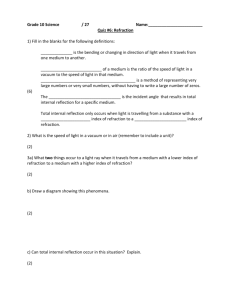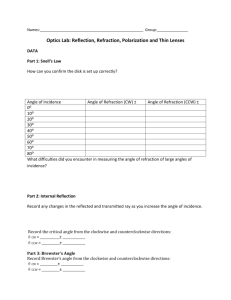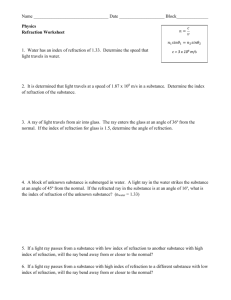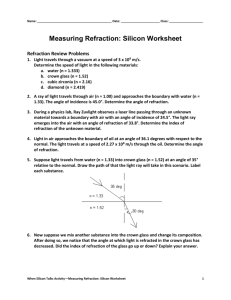Refraction of Light
advertisement
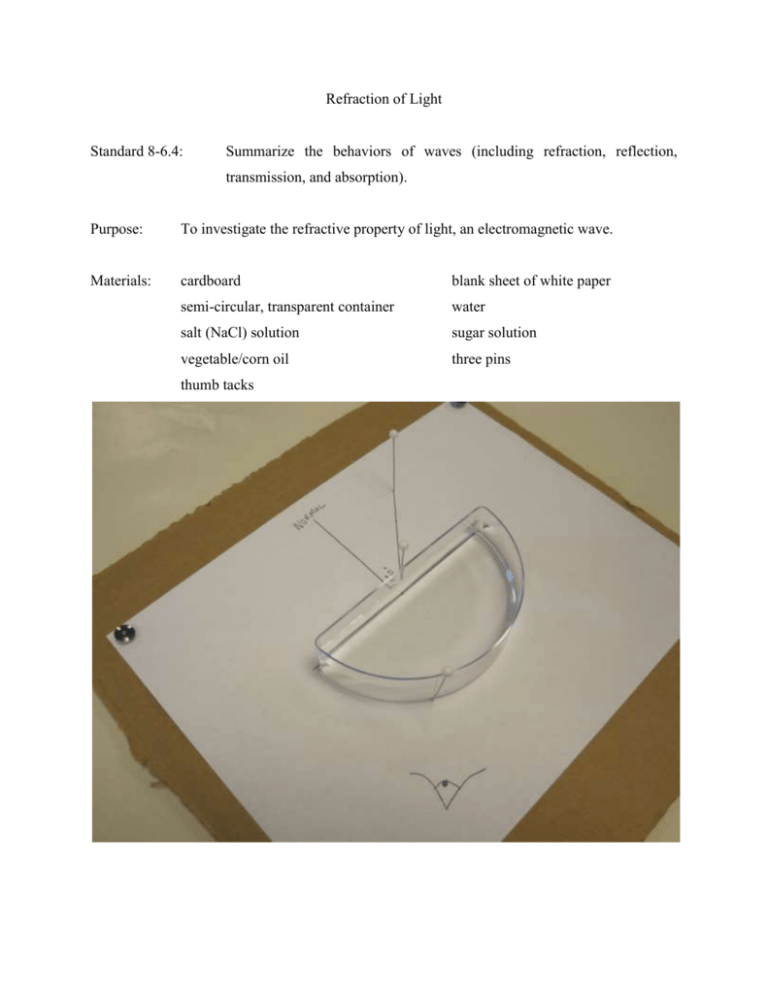
Refraction of Light Standard 8-6.4: Summarize the behaviors of waves (including refraction, reflection, transmission, and absorption). Purpose: To investigate the refractive property of light, an electromagnetic wave. Materials: cardboard blank sheet of white paper semi-circular, transparent container water salt (NaCl) solution sugar solution vegetable/corn oil three pins thumb tacks Procedure: 1) First, secure a blank sheet of white paper on a large piece of cardboard with thumbtacks. Trace an outline of a protractor in the middle of the paper. Find the midpoint of the straight edge of the protractor tracing, and draw a line perpendicular to the straight edge at that point and across the entire tracing. This is called the normal. 2) The purpose of this lab is to investigate the refractive property of light, so we need a medium through which the light can refract. For this lab, a simple semi-circular, transparent container filled with transparent fluid could be used. 3) Place the container on the tracing so that the container’s flat side matches up with the straight edge of the tracing. Draw a line from the midpoint and out from the straight edge of the tracing. The angle between the line and the normal line is called the angle of incidence. Pour water into the container, making sure to almost fill the entire container. Record the liquid’s index of refraction as well as that of air, finding the information from an internet source. 4) Place one pin on the midpoint and another along the line drawn. Look through the container until it appears that the two pins on the other side of the container line up, and place the third pin along the curved edge of the container so that it too appears to line up with the other pins. Remove the container and draw a line from the midpoint to where the third pin is, and measure the angle that line forms from the normal line. Enter the measured angle of refraction in the data table. 5) Repeat steps 3 and 4, multiple times, replacing the water with a salt solution, a sugar solution, and vegetable/corn oil. Data: Liquid Liquid’s Index of Refraction n2 Air’s Index of Refraction n1 Angle of Incidence θ1 (º) Calculated Angle of Refraction θ2 ( º ) Measured Angle of Refraction θ2 ( º ) Water Salt (NaCl) solution Sugar solution Vegetable/corn oil Questions: 1) What do you notice about the expected angles of refraction and the measured angles of refraction? 2) Is there any correlation between the liquids and their indexes of refraction? 3) Say we already knew the index of refraction of air, the angle of incidence, and the angle of refraction. How could we calculate the index of refraction for each liquid? Written by: Andrew Niswander, Winthrop Student


